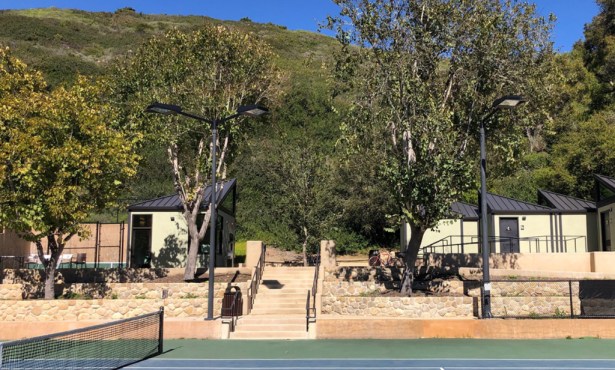Heroic, Bloody Hoisting
Flags of Our Fathers. Ryan Phillippe, Jesse Bradford,
Adam Beach, and John Benjamin Hickey star in a film written by
William Broyles Jr. and Paul Haggis, based on the book by James
Bradley and Ron Powers, and directed by Clint Eastwood.
Reviewed by Josef Woodard This year, Clint Eastwood revealed yet
another point of heroism in his long and brilliant career as he
brought new vision and intelligence to the embattled war film
genre. Yes, Eastwood’s dazzling Flags of Our Fathers is a genuine
war film, with elements of battlefield strategy and brutal,
instantaneous encounters of life and death. But other telling
angles emerge in this tale about the battle for Iwo
Jima — specifically the iconic photograph of soldiers hoisting the
American flag, as if in triumphant conquest.
 In fact, as the film pointed out, it was
In fact, as the film pointed out, it was
the second flag-hoisting of the day, coming on only the fifth day
of a fierce 39-day battle for the barren island, a tipping point in
the victory over Japan during World War II. That legendary image
quickly became part of the cunning war marketing and propaganda
machinery, as soldiers from the scene were sent around the country
on a tour to promote war bonds. Logically, this film covers that
part of the story as well as the battle itself, moving in
non-chronological patterns between past and present. Its non-linear
narrative storytelling strategy helps convey the lingering,
haunting memories of soldiers. War happens in real time, but also
distorts time and memory forever for those involved.
Even in the period after Saving Private Ryan changed the rules,
it’s still disorienting to see WWII — a “good war” — conveyed with
the graphic realism of contemporary cinema. Here, the visual effect
wavers between quasi-black-and-white and color, sometimes with only
bursts of blood and fire jumping out in living color. This forced
mixture of the sanitized vintage WWII movie lore and modern
spare-no-gore naturalism nudges our perceptions in a subtle way,
and represents the film’s agenda as a whole.
In this divisive political period in America, we need more
artists like Eastwood, who manages to cut across ideological lines
and get to the humanity of the matter. Eastwood takes care not to
side with either the conventional “war-is-hell but necessary”
rationale or the satirical “war-is-hell and should end now”
approach, and he has even pulled back to examine the conflict from
the opposite point of view. A companion film, Letters from Iwo
Jima, from the Japanese soldiers’ perspective, will be released
early next year.


